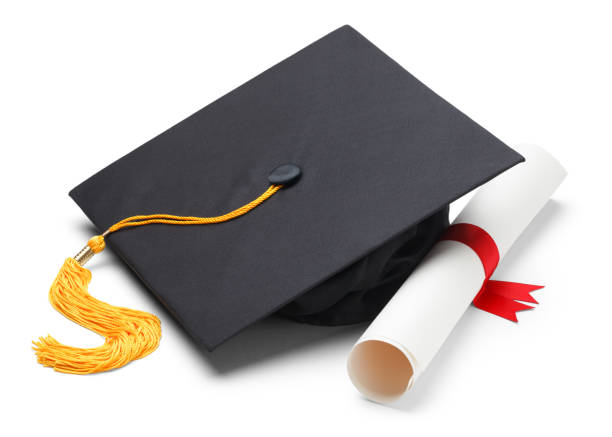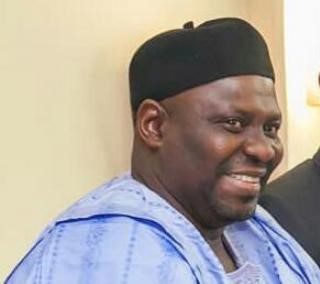THE REVIEW OF POST GRADUATE CURRICULUM IN ANATOMY
Symfony Academics Leave a comment 6028
The review of Post graduate curriculum in Anatomy became necessary to harmonize the postgraduate training in all universities in Nigeria. This is because of disparities in the content of the postgraduate training in some universities awarding postgraduate degrees.
The following courses are proposed for M.SC Anatomy Programme in all Departments of Anatomy offering Post graduate degrees in Anatomy.
1ST semester
- Cell Biology and Advanced Histology
- Basic Pathology and Histopathology
- Neurobiology
- Physical/ Biological Anthropology
- Comparative vertebrate Anatomy
- Teratology
SECOND SEMESTER
- Histochemistry and Cytochemistry
- Surface and Radiological Anatomy
- Endocrinology and Reproductive Biology
- Gross and Clinical Anatomy
- Research Methods and Biostatistics
- Advanced Gross Anatomical techniques(Optional)
-bone preparation
-embalming
-Plastination
-museum
THIRD SEMESTER: Thesis/Disertation
COURSES FOR PHD PROGRAME
1st Semester
- Radiological and Clinical Anatomy
- Human Genetics and Cytogenetics
- Advanced Developmental Biology
- Advanced Neurobiology
Second Semester
- Advances in Histochemistry, and Modern Histological Technique
- Cellular and Molecular Biology
- Physical and Forensic Anthropology
- Stereology
COURSE CONTENT FOR REVISED MSC PROGRAME
Cell Biology and Advanced Histology
- Levels of cellular organization in cell Biology- Limits and Dimension in Cell Biology, Eukaryotic and Prokaryotic cells
- The electron Microscopic structure of Animal cell including molecules in cells
- Types of microscope
- Cell cycle and control, cell division
- DNA replication, repair, and recombination
- From DNA to protein: How cells read the genome
- Control of gene expression
- Stem cell, differentiation and migration
- Structure of cell membrane and transport across membrane
- Cell to cell signaling- Hormone and receptors, Role of signals in metabolism
- Cell body receptors, Epinephrine receptors and activation of Adehylate cyclase, C AMP and Regulation of metabolism
- 2nd Messengers
- Multicellularity cell to cell and cell matrix interactions- collagen, Hyaluronic acid laninin, cell to cell Adhesion proteins, cell and matrix interactions
- The blood and body fluids
- Plasma, C.S.F intraocular fluids, endolymph, perilymph and amniotic fluids
- The histological basis of muscular contraction
- The reticuloendothelial and lymphatic system
- Selected topics in electron microscopy of systemic Histology
- Visual, auditory, excretory, reproductive system and Nervous tissue
BASIC PATHOLOGY AND HISTOPATHOLOGY
- Cell death, injury and Cellular Adaptation
- Tissue repair, regeneration, wound Healing and fibrosis
- Cellular Inflammation, acute and chronic inflammation
- Neoplasia, Biology of Tumor growth, Benign and malignant tumors,
- Molecular basis of cancer.
Environmental and Nutritional pathology etc
Neurobiology
- General organization of Nervous system
- Life history of Neuron
- The Neuron
Cellular components of nerve tissue
Morphofunctional regionalization and functions
Axonal flow and pathfinding,
Structural bases of the generation and propagation of the nervous impulse.
The interneurons,
Cytochemistry of the Neurons
- Neuroglía.
Concept of neuroglia.
Glial types and distribution, Astrocytes. Oligodendrocytes.
Microglia: functional meaning.
Ependymocytes and epithelium of the choroid plexus
Satellite cells of the peripheral ganglia
Schwann cell, Nervous fiber, Myelin sheath.
- Synapses
- Anatomy of synapes
- Transmission mechanisms. Exciting or inhibitory effects of neurotransmitters. Neuromuscular junction: motor plate.
- The Autonomic Nervous System
- Anatomy
- Physiology
- The Cerebral hemispheres
- Organization of cerebral cortex
- Phylogeny of the basis of histological observations
- Neurophysiology of Cerebral Cortex
- Electroencephalogram (EEG)
- Sleep
- Memory
- Neurophysiology of Cerebral dominance
- The Limbic System:
- Anatomy
- Physiology
- Neurobiolgy of Vision &smell
- Anatomy
- Physiology
- Neurobiology ofHearing
- Anatomy
- Physiology
PHYSICAL/ BIOLOGICAL ANTHROPOLOGY
- Introduction
-Nature of human kind
-What is Anthropology -study of method?
-Branches of anthropology
-What is physical anthropology?
- Evolutionary Theory
-Early views
-Questioning the old ideas
-Nature of science
-Applying scientific knowledge to anthropological problem
- Application of Evolution to Humans
-Human genetics
-Cytogenetics and molecular genetics
-Population genetics
- Human Variation
-The nature of human growth and development
-Osteology
-Human adjustments and adaptations
-Human variability
- Primatology
-Peoples place in nature
-The living primates
-Primate behavior
-Comparative anatomy of living primates
-Comparative ontrony, molecular Biology and Cytology
- Human Paleoatology
-Record of the past
-Early primate fossil records
-Australopithecus
-Homo sapiens
-Methods employed in the study of Fossil
- Anthropometry
- Human Ecology
-Human relationship to the environment
-Homo sapiens of the late upper Pleistocene
-Post-Pleistocene Homo sapiens
-Will there be a next millennium?
-Application of anthropological knowledge
COMPARATIVE VERTEBRATE ANATOMY
- Skeletal Tissue and system
- Muscular Tissue and system
- The Integuments
- Respiratory system
- Excretory and other balance system
- Digestive system
- Circulatory system
- Reproductive system
- Endocrines
- Nervous Tissue
- Sense organs
- Nervous system
- Nervous Pathways
TERATOLOGY
- Historical survey of congenital malformations
- Etiology of malformations
- Environment factors- infectious agents etc
- Radiations
- Chemical agents and drugs
- Hormones - progestin
- Cortisone
- meternal diabetes
- Disturbed carbohydrates metabolism
- Nutritional deficiencies including hypoxia and environmental chemicals
- Chromosomal and genetic factors
- Autosomal adnormalities
- Abnormal chromosomes in abortions
- Sex chromosome abnormalities
- Structural abnormalities of chromosomes – deletion, duplication
- Abnormalities of genes e.g
- Autosomal dominance
- Sex-linked and autosomal recessive inheritance
iii. Recessive genes and mutations
- Actions of teratogens
- General considerations
- Stages of embryonic development and susceptibility
HISTOCHEMISTRY AND CYTOCHEMISTRY
- Definition and historical survey of histochemistry and cytochemistry
- Cold knife and cryostat methods
- Freeze-drying/Freeze substitution of tissues
- Chemistry of fixation in histochemistry
- Instrumentation in histochemistry
- Principles of quantitative histochemistry and cytochemistry
- Histochemistry of proteins and amino acids including immunoflorescence
- Histochemistry of Carbohydrates and mucosubstances
- Histochemistry of lipids, lipoproteins and proteolipids
- Principles of enzyme histochemistry:
- Hydrolytic enzyme (Acid and alkaline phosphatases)
- Oxidases and peroxidases
- Dehydrogenases and diaphorases
- Transaminases
- Phosphorylases
SURFACE AND RADIOLOGICAL ANATOMY
- Skull radiograph
- Chest radiograph
- Barium meal/use of radiologic media
- Utrasonography
- Computerized tomography
- Angiography
- Urogram/Pyelogram
CLINCAL/SURFACE ANATOMY
- Skin and Incisions
- Thoracic viscera
- Lungs + Pleura
- Heart and Pericardium
- Trachae and bronchial tree
- Abdominal viscera
- Stomach
- Duodenum and Pancreas
- Liver and Biliary apparatus
- Pelvis Viscera
- Urinary bladder
- Uterus + Vagina
- Rectum + Anal Canal
- Pelvis diaphragm
ENDOCRINOLOGY AND REPRODUCTIVE BIOLOGY
- Brief survey of Endocrine organs
- Hypothalamic control of Adenohypophysis
- Hormones of Adenohypophysis
- ACTH
- TSH
- Gonadotropins
- Neurohypophyseal hormones including mammalian Neurophypophyseal hormones and their physical significance
- Female Gonadol hormones
- Chemistry + Synthesis of Oestrogens, Androgens and Reaxin
- Male Gonadal hormones
- Chemistry + Synthesis
- Adrenocortical hormones
- Thyroid and Parathyroid hormones
- Pancreatic hormones
- Morphology of Islets of Langerhans
- Effect of Removal
- Action of pancreatic hormones
- Chromaffin Cell hormones including the Catecholamines
- Producing cell system, distribution and metabolism of Chromaffin cell hormones
- Immunoassay of hormones
RESEARCH METHODS AND BIOSTATISTICS
- Definition of Research methods
- Classification and Types of Research methods
- Use of Library for Research
- Structure of a research thesis
- Structure of Research Paper.
- Research Ethics
- Use of internet as research tool.
- Descriptive statistics
- Knowledge of data collection tools and technique
- Data science methods and data representation methods
- Ways to successfully and efficiently communicate the results of data analysis
- Understanding how to avoid the risk of unverified and misleading claims based on data analysis
GROSS ANATOMY AND ADVANCED ANATOMICAL TECHNIQUES
- Review and dissection of;
- Upper and Lower limbs
- Thorax , abdomen, pelvis and perineum
- Head and neck
- Brain
- Bone preparation
- Embalming Techniques
- Plastination and its Techniques
- Museum Techniques and preparation of Pots
COURSE CONTENT FOR PHD PROGRAME
1ST SEMESTER
RADIOLOGICAL AND CLINICAL ANATOMY
This course will deal with pattern recognition and critique of normal and clinical presentations on;
- Biliary and Respiratory systems
- Reproductive and cardiovascular systems,
- Tomographs (CTScans),
- Ultrasound,
- Magnetic resonance MR,
- Radioisotope images procedure outline on the upper extremity, pelvis and lower extremities, vertebral column,
- Clinical and Surgical Anatomy of the above listed systems will be taught
- Radiographs, contrast radiographs films of GIT, excretory.
HUMAN GENETICS AND CYTOGENETICS
The course is to introduce the students to
- Principles of trait transmission,
- Complexities in relating genotype and phenotype,
- Chromosomal theory of inheritance,
- Gene linkage and recombination of DNA as molecule of hereditary and replication.
- Recombinant DNA technology.
- Introduction to genetic engineering and its use in unraveling genomic information.
- Gene regulation and development including its role in congenital malformations.
- DNA at high resolution and its use in cloning, PCR and tools for genetic analysis.
- Use of transgenic mouse model for Human disease.
- Population Genetics and founder mutations
- Genetics of cancer and other diseases
- Human genetics and the future of biology and medicine.
- Recent Advances in genetics.
ADVANCED DEVELOPMENTAL BIOLOGY
- General review of animal development from gamatogenesis to histogenesis,
- Role of cells in development and cell signaling.
- Modern concept of fertilization, cleavage, axis formation and mesoderm induction.
- Localization cytoplasmic determinants.
- Cells adhesion and morphogenesis.
- Gene expression in development.
- Stem cell development, potency and prospects in Medical Sciences.
- Pattern formation and embryonic genes.
- Role of Hox gene in vertebrate development.
- Sex determination and hormonal control of development.
- Senescence, characterized genes that affect animal life span.
- Oxidative damage and organisimic senescence.
ADVANCED NEUROBIOLOGY
This course will expose the students to
- Cellular and molecular properties of neuron
- Electrical activity of neurons,
- The molecular basis of the chemical activity of neurons and chemical synaptic transmission,
- identity, actions and mechanisms of neurotransmitters and neuromodulators
- Fundamental concepts of development of nervous system to include control of proliferation and development, axonal outgrowth, pathfinding, synaptogenesis and formation of neuronal maps, neural regeneration.
- Neuronal function regulation, role of cytoskeleton in neuronal function,
- Signaling by GTP-binding proteins,
- Role of protein-protein interaction in the regulation of neural signaling,
- Genomic and proteomic approaches to study of neuronal signaling.
- Cell neuromuscular function and dysfunction.
- Biology of neurodegenerative diseases such as Parkinson’s, Alzheimer’s diseases etc
- Nerve growth factors and their role Medical advances
SECOND SEMESTER
ADVANCES IN HISTOCHEMISTRY AND MODERN HISTOLOGICAL TECHNIQUE
- Advances in carbohydrate, protein nucleic acid, lipid Histochemistry and applications.
- Immunohistochemistry,
- in situ-hybridization,
- immunogold,
- in situ-PRC cell culture,
- Autoradiography,
- Anterograde and retrograde tracing
- Immunofluorescent techniques and use in diagnostic tumour pathology.
- Methods in electron microscopy theory, tissue preparation, staining and diagnostic uses.
- Histometry and quantitative Histochemistry.
CELLULAR AND MOLECULAR BIOLOGY
- Comprehensive introduction to structure and function of cells and organelles,
- Cells as functional units, cellular diversity, cellular chemistry, cellular structure, cell cycle,
- Cell membrane activities, membrane transport
- Signal transduction and Clinical considerations.
- Cellular adaptations, cellular trauma, cancer cells,
- Cells and aging.
- Metabotropic and ionotopic receptor signaling,
- signaling by GTP binding proteins,
- role of protein interactions in regulation of cellular signaling, genomic and proteomic approaches to study of cellular signaling cell adhesion-molecules, strategy of cloning analysis. Advances in molecular Biology.
PHYSICAL AND FORENSIC ANTHROPOLOGY
- Biology of human variation and climatic adaptation.
- Studying the appearance of humans and dimensions such as;
- Dermatoglyphics, Fingerprinting
- Imaging, girth measurements,
- Surface area, mid-arm anthropometry,
- Pelvimetry,
- Craniometry and various indices including calculating the height (stature) of the individual from skeletal remains.
- Methods in studying the physical differences between individual sexes, ethnic groups and races. Human Remains, Confirmation and Time of Death, Stomach Contents and ocular changes
- Forensic Anthropology – Definition ,Processes of Decay, Autopsy Reports,
- DNA - Indispensible Forensic Anthropology
- Human Bone vs. Animal Bone Skeleton, Comparison of Human Males & Females Ancestry from Skeletal Remains,
- Determining Types of Trauma from Skeletal Remains,
- Forensic Serology.
Forensic Characterization of Bloodstains and Semen, Collection of Rape Evidence,
- Toxicology of Alcohol, Techniques and the Significance of Toxicological findings.
- Collection Techniques and Documentation of a crime Scene through, Photographic Evidence and Log recording.
Seminars can be added to the above coursework
In Addition, Departments of Anatomy can mount interdisciplinary MSC and PhD Programmes in the following specialized areas namely;
- Forensic Anthropology
- Human genetics and genomics
- Forensic Science/ Forensic Anthropolgy
- Clinical embryology and andrology
- Kinanthropometry and Sports Anatomy
- Mortuary science
By Professor Theresa Ekanem – University of Calabar
Chairman Postgraduate Review Committee
Other members of the committee include:
Dr Loveday Oghenemavwe - University of PortHarcourt
Dr Moses Ekong - University of Uyo
Dr Iniibehe Okoko - University of Lagos
Dr Adekomi, Alex A. – Osun State University
We thank The President, Members of the Executive and entire members of Anatomical Society of Nigeria for giving us the opportunity to serve our Great Society
Thank You
Prof. Theresa B. Ekanem
For the Committee








